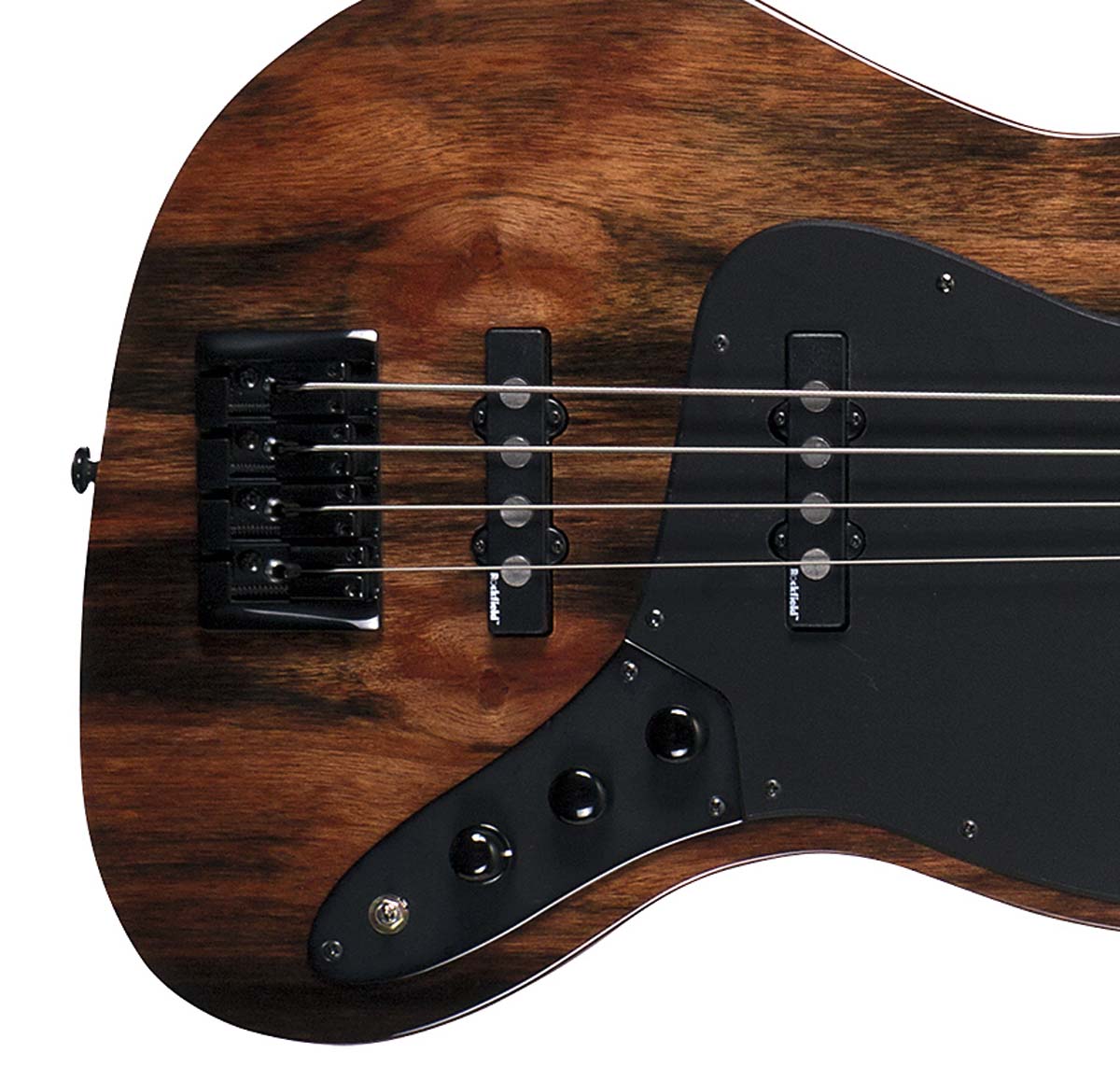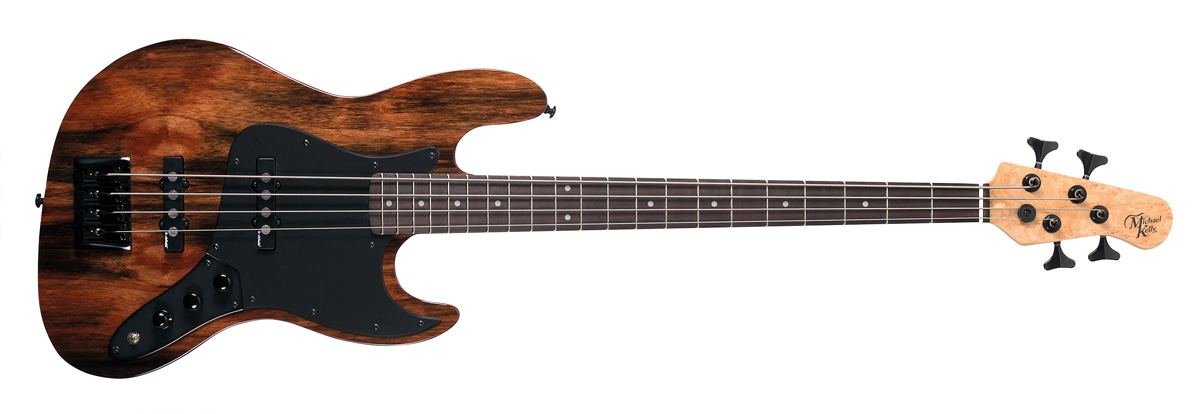Guitar World Verdict
A good first entry into the market from Michael Kelly, the Element 4 has a lot of style and is a rock solid performer at an accessible price.
Pros
- +
Looks great.
- +
Switchable between active/passive.
- +
Stealth Attack Bridge System adds mass and sustain.
- +
Builds on the classic design very nicely.
Cons
- -
Some issues with build quality.
You can trust Guitar World
After establishing themselves first as builders of acoustic bass guitars and mandolins, then later of electric guitars, Michael Kelly have recently taken their first steps into the bass guitar world.
The small, Korean-built range currently on offer builds on the look and feel of a much-loved classic, although with modifications and enhancements – some obvious, some not – that aim to provide a superior playing experience.
We put the Custom Collection Element 4 through its paces. Our Element 4 has a red cedar body topped with striped ebony, and zebraburst and burl tops are also available. The finish is gorgeous, with the high gloss of the ebony top perfectly paired with a matt black pickguard and black hardware.

The large, exposed pole pieces on the Rockfield pickups are a nice aesthetic choice that work well here. A rock maple neck is topped with a pau ferro fretboard, with the headstock shaping veering away from the classic design foundation and into more modern territory.
Finishing is good across the instrument, although the edges of the nut would benefit from a little extra filing. Internal wiring is neat, but there is some sawdust in the cavity that really should have been cleaned out. These are relatively minor issues that are simple to address, however.

Although the Element 4 borrows heavily from the classics, there are genuine innovations beneath the surface. The most notable of these is the Stealth Attack Bridge System.
On its own, the bridge is a solid and nicely designed piece of hardware, but there’s more to it than is initially obvious: for improved sustain, the bridge is mounted to both the body and to an aluminium tone block built into the body directly beneath.
This fully integrated system adds mass to an important tonal element of the instrument, with the intention of greatly improving attack and sustain.
In terms of controls, the Element 4 has a master volume, a blend and a stacked treble/bass control. There’s also a toggle switch for active and passive modes. In passive mode, the instrument responds well to all playing styles, with plenty of bite bursting from the bridge pickup, and a smoother, warmer tone offered by the neck pickup.
In active mode, the tone controls add further breadth to the palette, but I was disappointed to hear significant noise from the pots when rotated. Again, this is something that is relatively simple to sort out.
In terms of playability, the Element is smooth and easy to get around thanks to a slim neck profile. Despite the presence of smaller tuning pegs, the headstock mass causes a certain amount of neck dive, although those who are used to playing much older instruments will certainly notice an improvement in this regard.
The Element 4 has much to commend it: it’s an eye-catching instrument with some well-considered enhancements, and in this price bracket it should find an audience without any problem.
There are some issues with build quality, but as noted above they’re relatively minor and hopefully limited to our review instrument. The Element 4 would be well-suited to beginners with a good budget, or those with some experience looking to upgrade to a more versatile bass.
Specs
- Price: $649 / £849
- Made In: Korea
- Colour: Striped ebony (burl and zebraburst also available)
- Body: Red cedar
- Neck: Rock maple, bolt-on
- Scale: 34"
- Nut: Bone
- Nut Width: 1.63” / 41.4mm
- Fretboard: Pau ferro
- Frets: 21
- Pickups: Rockfield 4SW custom-wound single-coils
- Controls: Volume, blend, stacked tone
- Bridge: MK Stealth Attack Bridge System
- Hardware: MK Die Cast
- Contact: Michael Kelly Guitars
“An esoteric boutique vibe, superb ergonomics and a powerful, unique preamp – Tobias is back”: Tobias Growler IV review
“Affordable versions of the three best basses I've ever held in my hands”: Sterling by Music Man completes its trilogy of Joe Dart signature models with a trio of made-to-order basses that cost less than $500











